Introduction: The Rise of Gardening with Coconut Coir
Modern gardeners are increasingly turning to sustainable, effective alternatives to conventional soil and peat moss—and coconut coir for plants is leading the charge. Often referred to as coco coir or coir soil, this natural byproduct of the coconut industry has become a staple in eco-friendly gardening practices.
Whether you're dealing with sandy soil, clay soil, or growing indoors, the benefits of coco coir are numerous: excellent moisture retention, improved aeration, and sustainable origins. It’s suitable for everything from seed starting and container gardening to full-blown coco gardening setups.
But what exactly is coco coir, how is it used, and why is it such a game changer?
Let’s explore the science, sustainability, and practical applications behind coconut coir for gardening.

What is Coco Coir? Understanding Its Origins and Structure
Coco coir is a natural, fibrous material derived from the outer husk of coconuts. Once considered a waste byproduct of the coconut industry, it has become a widely valued medium in horticulture and agriculture due to its sustainability and plant-friendly properties.
Coco coir is processed into several useful forms, each with specific gardening applications:
- Coco peat (also called coir pith): A fine, soil-like substance that offers excellent moisture retention and is ideal for seed starting or soil conditioning.
- Coco fiber: Long, coarse fibers that provide structure and aeration in potting mixes. Especially beneficial for container gardens and hydroponic media.
- Coco chips: Medium-sized chunks that combine water retention and drainage, often used for orchids and tropical plants.
- Coco mats and liners: Durable sheets of coir fiber, perfect for hydroponics, erosion control, or lining hanging baskets and window boxes.
These materials are commonly compressed into:
- Coco peat bricks
- Loose coco coir mixes
- Coconut soil bricks
These compressed forms expand significantly when hydrated, making them lightweight, easy to store, and convenient to use.
Watch our video on using coco coir as a soil amendment to see how it enhances soil texture, water management, and root development in action.
How is Coco Coir Made?
Coco coir production involves a series of sustainable, low-waste processes:
- Harvesting: Mature coconuts are harvested primarily for their water and meat. The fibrous husk is separated for coir production.
- Retting (Soaking): The husks are soaked in water to soften the fibers. Traditional retting takes several weeks, but modern mechanical retting speeds up the process while reducing water usage.
- Fiber Separation: The husks are mechanically beaten to separate the coir fibers from the coir pith (peat-like material).
- Drying: Both the fibers and pith are thoroughly dried to prevent mold and decay.
- Packaging: The dried material is compressed into bricks, blocks, or bags for commercial and home gardening use.
This process produces zero waste — all parts of the coconut are used, making coco coir an environmentally responsible alternative to non-renewable materials like peat moss.

Why Use Coco Coir? Key Benefits for Gardeners
Coco coir offers a combination of physical and environmental benefits that make it an excellent choice for soil improvement, seed starting, hydroponics, and container gardening.
Water Retention and Drainage
Coco coir can absorb up to 8–10 times its weight in water, providing consistent hydration without oversaturating the root zone. This helps reduce watering frequency and protects plants from root rot due to overwatering.
Improved Aeration
Its fibrous structure creates natural air pockets, which increase oxygen availability to the roots and prevent soil compaction. This is especially useful in pots, raised beds, and dense or clay-heavy soils.
Sustainable and Renewable
Unlike peat moss, which is harvested from carbon-rich peat bogs, coco coir is a byproduct of the coconut industry — which would otherwise go to waste. Using coconut husk for plants supports low-impact agriculture and reduces landfill waste.
pH Neutral and Nutrient Friendly
Coco coir has a naturally balanced pH of about 5.5 to 6.8, which is close to ideal for most plant types. It also has a cation exchange capacity (CEC), meaning it can hold and release nutrients efficiently, making it a strong partner for fertilization.
Resistant to Pests and Diseases
Coco coir is naturally antifungal and pest-resistant, reducing the risk of root diseases like Pythium and Fusarium. This makes it a cleaner and safer option for seed starting and indoor growing.

Recommended Coco Coir Products
If you're ready to try coco coir in your garden, here are a few excellent options:
- Just Coir Loose Mix (2 cu ft): Ready to use out of the bag, great for improving soil texture and water retention.
- Coco Peat 1.3 cu ft Brick: Expands when soaked, perfect for indoor or container gardening.
- Coco Peat 4.5 cu ft Brick: Ideal for larger garden beds or hydroponic systems.
- FoxFarm Coco Loco Potting Mix: A premium blend that includes coco coir, forest humus, and mycorrhizae to boost root health and microbial activity.
Applications of Coco Coir in Gardening
Whether you’re growing vegetables, flowers, herbs, or houseplants, coco coir is one of the most adaptable and sustainable soil components you can use. Its unique blend of moisture retention, aeration, and eco-friendliness makes it ideal for a wide variety of gardening systems.
Container Gardening
Coco coir is a fantastic base for potting mixes. It enhances water retention while allowing roots to breathe, which is crucial in confined containers. It's especially beneficial for tropical plants, succulents, herbs, and indoor houseplants that prefer consistently moist (but not soggy) soil.
Pro Tip: Combine coco coir with compost and perlite for a balanced container mix that drains well and retains just the right amount of moisture.
Hydroponics and Aquaponics
Thanks to its neutral pH, excellent moisture retention, and low pathogen risk, coco coir has become a preferred medium in soilless systems. It supports healthy root development while efficiently holding water and dissolved nutrients.
Coco coir’s structure allows it to stay moist without suffocating roots, making it ideal for ebb and flow systems, deep water culture, and drip irrigation hydro setups.
Seed Starting
Coco coir’s fine texture and naturally sterile nature make it perfect for starting seeds. It provides consistent moisture levels and prevents damping-off diseases that often harm young seedlings.
Mix with compost, perlite, or vermiculite to improve structure and boost germination rates.
Soil Amendment
If you struggle with heavy clay (which compacts easily) or sandy soil (which drains too quickly), coco coir is an excellent amendment. It helps improve soil texture, increases water retention, and promotes better aeration.
Use coconut soil bricks as a peat-free alternative. These can be soaked and worked into garden beds to enhance soil quality.
Mulching
Coir mulch, often sold in compressed mulch bricks or coarse coconut husk chips, is ideal for moisture conservation and weed suppression. It slowly breaks down over time, contributing organic matter back to the soil.
Great for summer gardens, raised beds, or around shrubs and perennials to reduce evaporation and regulate soil temperature.

Types of Coco Coir Products to Try
Here’s a breakdown of popular coco coir formats and how to use them:
Coco Peat Bricks: Compact, lightweight, and easy to hydrate. Ideal for seed starting, potting mixes, and soil amendments.
Loose Coir Mixes: Pre-expanded and ready to use—perfect for raised beds, houseplants, or container gardens.
Coconut Fiber Pots: Biodegradable pots that can be planted directly into the ground, minimizing transplant shock.
Coconut Husk Mulch (Coir Chips): Ideal for surface mulching in gardens or decorative planters, helping to retain water and reduce weed growth.
Want to compare with peat moss? Check out our guide on peat vs alternatives to explore the differences in water retention, sustainability, and plant compatibility.
Tips for Using Coco Coir in Your Garden
To get the most from your coco coir, follow these tips:
Hydrate Before Use
Coco coir bricks must be soaked in warm water before use. Once hydrated, the brick expands significantly, transforming into a fluffy, pliable medium. This allows for proper moisture holding and air flow.
Tip: Soak 1 brick (650g) in about 4–5 liters (1 gallon+) of water for 15–30 minutes.
Mix Properly
Depending on your plant’s needs, blend coco coir with:
- Perlite or pumice for added drainage
- Compost or worm castings for biological activity
- Vermiculite to increase water retention
Create a mix that balances moisture, aeration, and nutrition based on the type of plants you're growing.
Monitor and Adjust pH
Although coco coir is generally pH neutral to slightly acidic (5.5–6.8), it’s important to check pH regularly, especially when used in hydroponics or with sensitive plants like blueberries or carnivorous species.
Use a pH meter or test strips, and adjust using appropriate additives to suit your plants’ ideal range.
Supplement Nutrients
Coco coir is chemically inert—it doesn’t contain many nutrients on its own. However, it has a high cation exchange capacity (CEC), meaning it holds onto added nutrients and delivers them gradually to your plants.
Pair it with organic fertilizers, compost teas, or liquid feedings for best results. Some growers also “buffer” coir by pre-soaking it in calcium- and magnesium-rich solutions to prevent nutrient lockout.

Conclusion: Is Coco Coir Good for Plants? Absolutely.
Whether you're creating a raised bed, starting seeds indoors, or diving into hydroponics, coconut coir for plants is a smart, eco-conscious choice. The benefits of coco coir—from water retention to root health to sustainability—make it one of the most versatile materials in organic gardening today.
With a range of products like loose coir mixes, peat alternatives, and mulch bricks, you can easily enhance your garden while reducing your environmental footprint.
FAQs: Coconut Coir for Plants
-
What are the benefits of coco coir?
- The top coco coir benefits include excellent water retention, improved aeration, pH neutrality, reusability, and sustainability. It’s ideal for both soil amendment and soilless gardening systems.
-
Why use coco coir instead of soil or peat moss?
- Unlike soil, coco coir is sterile and weed-free. Compared to peat, it’s renewable and environmentally friendly. It holds moisture without compacting and enhances root aeration.
-
What is the best use of coconut coir in gardening?
- Coconut coir is best used in potting mixes, hydroponics, seed starting, and amending heavy or sandy soils. It can also serve as a biodegradable mulch.
-
What is coco coir good for?
- Coco coir is good for container gardening, raised beds, indoor plants, and compost enhancement. It’s also excellent for water conservation in dry regions.
-
Is cocopeat the same as coco coir?
- Cocopeat (or coir pith) is a component of coco coir—specifically the fine, powdery part. It’s the most water-retentive form of coir, often used in seed starting and potting mixes.
-
What is coir soil?
- Coir soil is a term used for growing media made primarily from coconut coir. It may be used alone or blended with other amendments to create ideal growing conditions.
-
What are the nutrients in coco coir?
- Coco coir is low in nutrients but has a high cation exchange capacity (CEC), meaning it holds onto added nutrients effectively for plant roots to absorb.
-
Is it good to mix coco coir with soil?
- Yes! Mixing coco coir with soil enhances moisture retention, aeration, and drainage—especially beneficial for clay or sandy soils.
-
How to use coco coir for plants?
- Soak and expand bricks before use
- Mix with compost or perlite for potting
- Use as a mulch or hydroponic base
- Blend into raised beds or containers



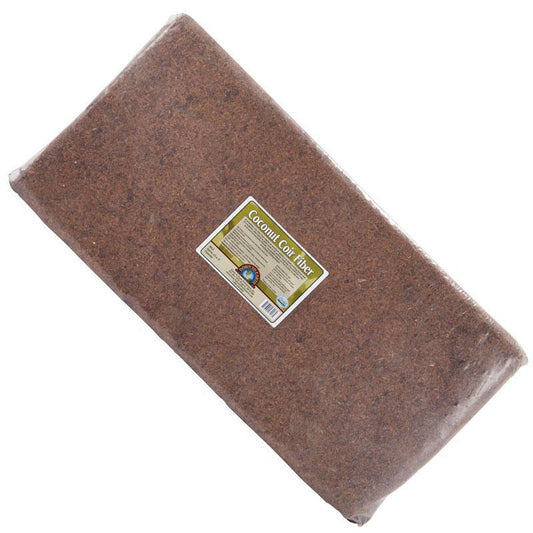
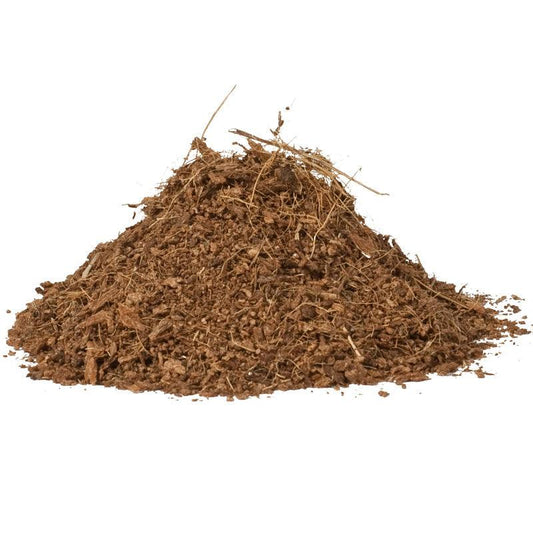
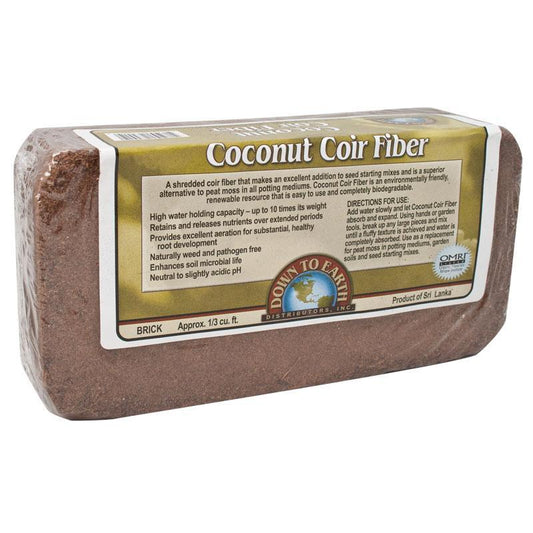
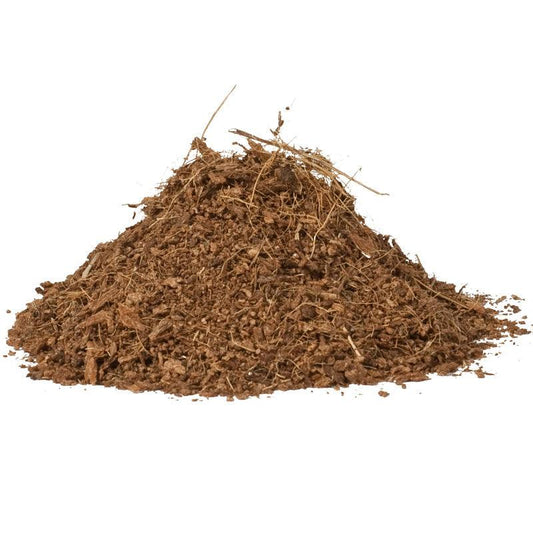
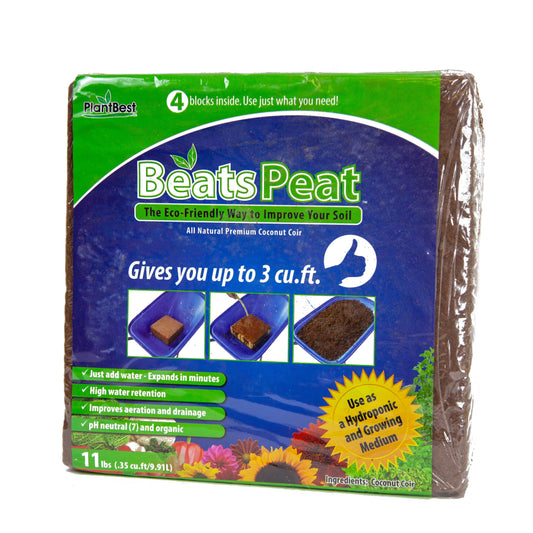
19 comments
Silas, you can amend with compost if you have very heavy compact soil. Compost will feed the soil microbes better than coco coir, but if you don’t have compost coco coir will also help improve the tilth of your soil.
Is it advisable to use coco coir in the soil mix when growing apricots? I have read that apricots need well drained soil, but it sounds as if coco coir improves both the water retention AND the drainage of the soil.
Gummy, you can add coco coir as a soil amendment to your existing soil. It does not provide any nutrition to your plants, but is great for loosening up clay soil and helps to improve the water holding capacity as well. I would not use it as a soil replacement though.
Can I use Coconut coir fiber as soil based mixture in planting honeydew melon?
Wow such a nice post on coco coir. Now i can know about coco coir and its benefits, uses.
Thanks for sharing.